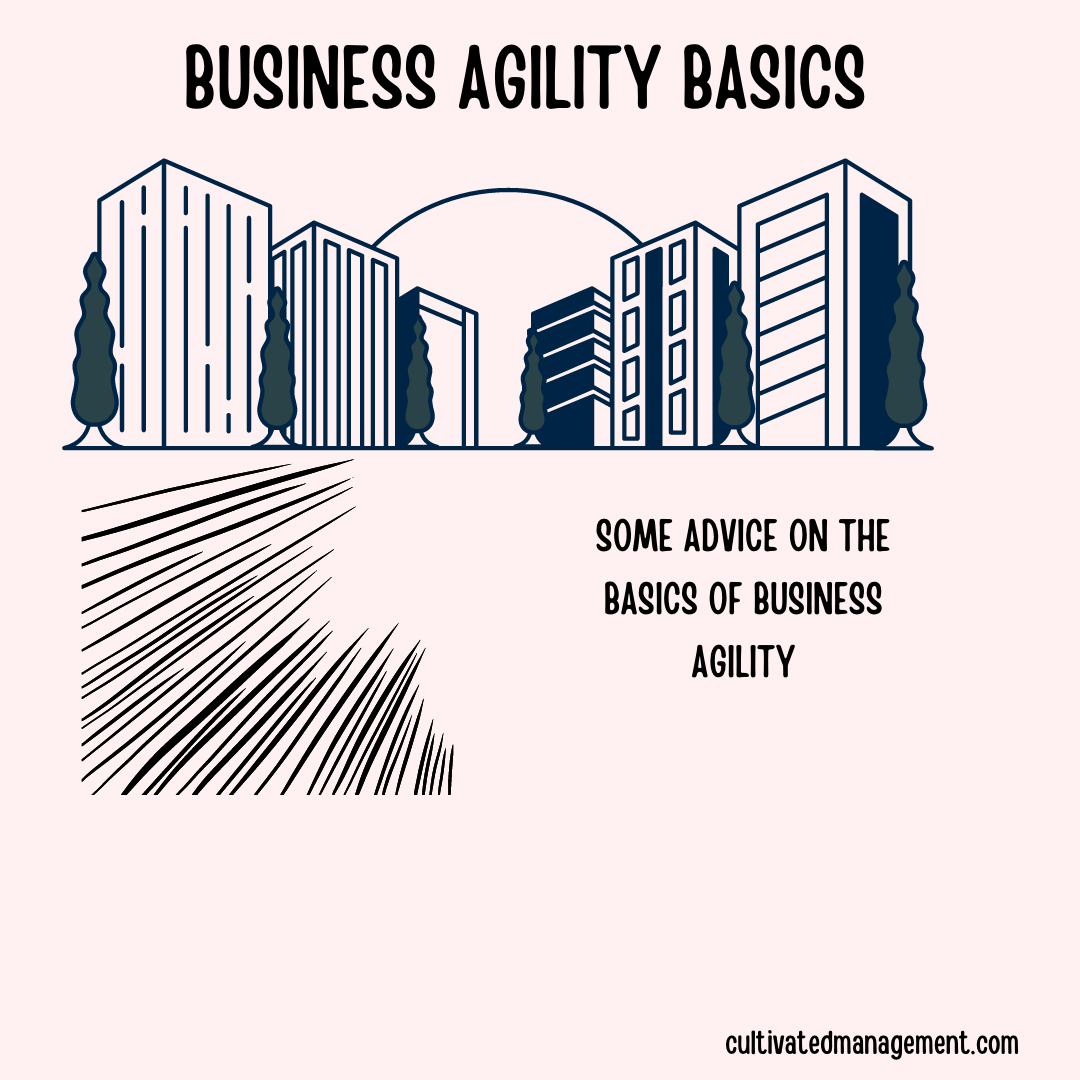How I teach Business Agility with a simple puzzle
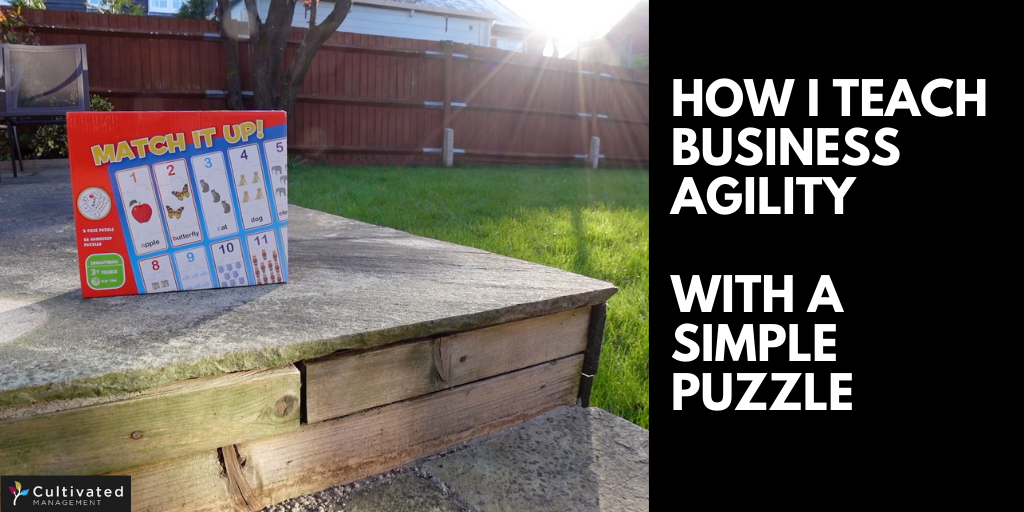
Here’s how I teach business agility.
I’ll never forget the first time I ran my Releasing Business Agility workshop using a kid’s puzzle.
Would it be too immature? Would the audience resonate with it? Or would they think I’m a childish fool?
All of these thoughts, and more, were rushing through my head as I lined up 25 managers and execs in a hotel conference room in Hampshire.
As I introduced the game I was worried I was wasting their time. As it happened, it was a roaring success. They were engaged, they had fun but more importantly they came away with some wickedly insightful lessons on business agility. The kids puzzle proved an excellent way to teach Business Agility.
The fact that a kids puzzle, designed for 3 year olds, resonated so much with business leaders says something deep about how people come together at work.
Are we just like kids? Is there a timeless truth about what happens when people come together to solve a problem?
After this first session I proceeded on a campaign of childish teachings. I’ve run this agility basics workshop over 700 times now.
I’ve run this game for teams of 6 people all the way to 140 people in a room. And it works. It gets people buzzed and fired up. It’s got so many lessons that it’s ridiculous. I’ve only listed the obvious ones in this post – but there are always more.
In one company they wanted to play this game with those who couldn’t make it! They still play this game as part of their onboarding to this day!
The Game
So here’s how the game works and I’ve stolen a little bit of this from Mike Rother and the Toyota Kata.
The game I like to use a simple “Match Them Up” puzzle. The one I use is from Tesco (and sadly you cannot buy them anymore).
Top Tip – If you’re going to run these games, find one that works for you and buy many packs of the game.
Each game pack has about 25 puzzles, so I can cover 5 small teams of 5, with one puzzle pack.
Each individual puzzle has three pieces; a description, a number and some images. The goal is to match the three things up.
Here’s how to run the game
Step 1 - Get people into teams of 3-5 people.
I typically run the workshop for 20 + people, so you could end up with 4-5 teams.
Any fewer than 3 people in each team and the team-working lessons are less effective. Any more and the game takes longer. Which isn’t a problem really, but the workshop can drag on.
Step 2 - Explain the game.
Rules:
They will need to work as a team to recreate this same matched combination as they see in front of them. Anyone can do anything in the game and the team who rebuild the puzzle to the same quality, in the quickest time, wins.
Step 3 - Ensure the puzzle is already built on each table.
I usually ensure there is one more puzzle piece than the number of people in the team. So, if you have 4 people in each team, I would ensure there are 5 Match Them Up puzzles (like the image below).
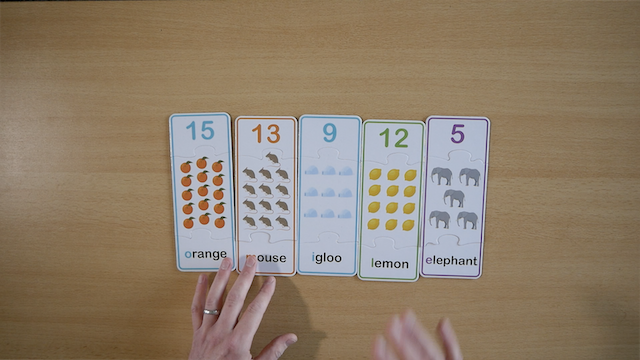
Make sure that you give some teams really easy ones, like those with fewer items, or ones that are different colours so they can quickly pattern match. And give some teams harder ones, like those that are all the same colour, or those with higher numbers, or with less obvious images. Random can work.
Step 4 – On a whiteboard or flipchart write the names of each team.
Either number them or let them come up with their own. Write each team name down the left hand side and divide them using horizontal lines. Now draw at least 3-4 vertical lines leaving small squares to write the times in for each team, for each round.
They will be playing the game around 3-5 times, so leave room for 5 sets of results for each team.
The more visible this is, the better.
Step 5 – Mix it up
Ask them to turn the puzzle pieces over so the backs are showing up. Then ask them to mix them up and build them into a tower.
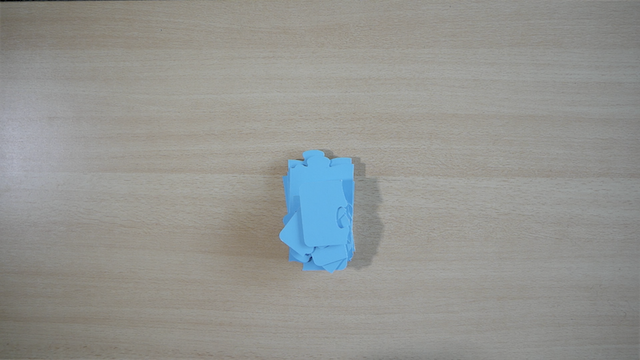
Step 6 – Grab a timer and get them prepped.
Explain it’s competitive.
Tell some jokes (if that’s your style) and get them excited about competing with each other. Ask them to get animated. Ask who’s competitive and who isn’t?
Step 7 – What’s their strategy?
At this point you should ask them what their strategy is for the game. How are they going to build these puzzles? They may choose to jot this down on some paper.
Observe the dynamics and how long this takes. Don’t interupt them or call the game to start – just let them discuss it for as long as it takes (of course, more than 5 minutes of this is wasting everyone’s time). Use your judgment.
Step 8 – Run the game.
Give them a count down then let them go – ensuring they shout something to you when they believe they are finished.
Each team continues until all teams have finished. Your job is to make a note of the times for each team on the flipchart. It can get quite chaotic, so you may benefit from a co-facilitator.
Ask them to reflect and come up with a strategy for the next round. Same rules, same game but maybe they will have a new strategy.
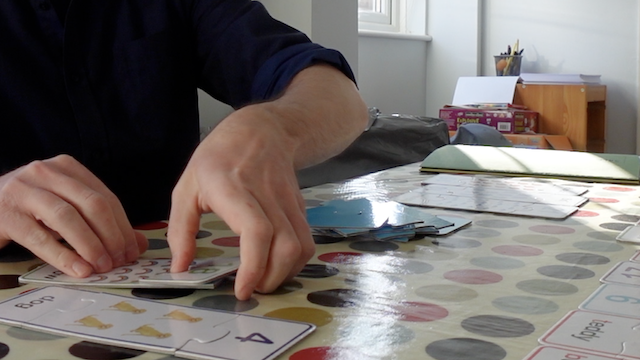
Step 9 – Rinse and repeat.
I find that 4/5 rounds is enough to spot the many lessons we’ll go through in a minute. Close the game time.
Step 10 – Reflect
Ask them to reflect as a group for a few minutes. Write down all of the reflections and lessons on a whiteboard or flipchart.
Step 11 – Explain the lessons from the game
Go through the reflections with them, then pull up a slide or some other communication that explains the following lessons.
The Lessons
- All of the lessons (to date – new ones emerge).
- Not all work is the same (size, complexity, value)
- It helps to understand what success looks like (end results, value to the customer etc)
- Not all teams have the same experience, skills and pressures
- It sometimes doesn’t take long to get feedback on an idea
- We can often spend longer discussing how to overcome problems, than it takes to test the idea
- We need a safe and fun environment to work (fun is the canary in the coal mine)
- Not all experiments give positive results, so it’s important to measure the problems (and business results + retention)
- We can get better, but sometimes we reach the limits (people, team, environment)
- We sometimes change strategies too quickly before building the right teams and understanding our work
- We often must do the work before we understand it (and then optimise it)
- We sometimes cut down other people’s ideas
- It helps to know our current reality, the painted future and the problems standing between us
- Having the right people in the right place, with the right skills helps
- We are focused and doing one thing at a time
- When we collaborate, co-ordinate and co-operate we get results
- When we get feedback, we see the shadow of the future (i.e., the consequences of our actions)
- Variety must be catered for – our work is never standard
- There are always more problems in business than we can ever solve – so it pays to know which problems matter
- It pays to focus on being effective first, and then making that more efficient
